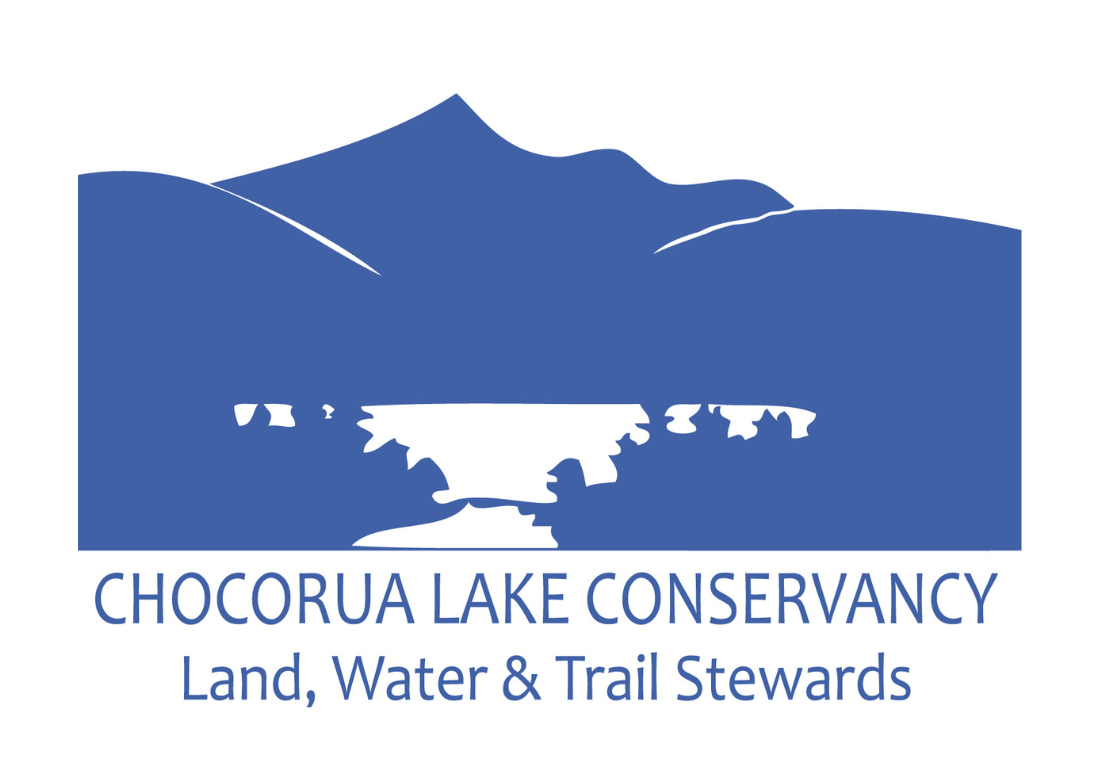In 2001, the Chocorua Lake Conservancy was awarded a “Conservation Award of the Year” by the Carroll County Conservation District for its work on the “Berms and Swales” project, an example of Best Management Practices, or BMPs. Learn about the project in this short video.
History of Water Quality Testing in Chocorua Lake
Ongoing interest in the health of Chocorua Lake began in the mid-1970s when college students in freshwater biology classes at the University of New Hampshire started coming to the lake on field trips to practice water sampling techniques they had learned in class. These irregular sampling events were limited, however, and it was not until 1981 that Chocorua Lake became one of the first lakes to join the NH Lakes Lay Monitoring program administered by Center for Freshwater Biology at the University of New Hampshire. Through the efforts of a few dedicated Conservancy volunteers, including Art Baldwin, Toby Page and Dwight Baldwin, Chocorua Lake boasts the second longest uninterrupted record of water quality changes in the State of New Hampshire. Each year, a minimum of ten samples are collected at a given location on the lake and these are tested for eight water-quality parameters.
First Signs of Trouble
By 1995, this database of water quality information proved critically important in highlighting the slow deterioration of water quality in Chocorua Lake. Algal concentrations (Chlorophyll a) in the water column were increasing as a consequence of increasing total dissolved phosphorous, and the clarity of water in Chocorua Lake was clearly being impacted negatively.
Under Toby Page’s leadership, and with the help of the Center for Freshwater Biology at the University of New Hampshire, a year-long phosphorous budget analysis was undertaken in 1996-1997 to determine the inflow and outflow of phosphorous input into the lake. Over 200 phosphorus samples were analyzed and more than 225 stream-gage or culvert readings were recorded. This study showed that, although the Chocorua River was the greatest contributor of total phosphorous to the lake, the small drainage areas along Route 16 on the eastern shoreline contributed a disproportionately high load (15%).
What to Do?
With a grant from the NHDES, the Chocorua Lake Conservancy and six federal, state and local agencies came together in 2000 to initiate what was termed the Berms and Swales Project. This project included the installation of a system of berms, swales and settling and filtering basins (called best management practices) to catch water and sediment that runs out of these small watersheds on the eastern shore before they enter the lake. The channels of these tributary streams were also lined with rock in their lower reaches to reduce stream-channel erosion.
The Results
In the year following the completion of what is now officially known as the Chocorua Lake Project, water quality monitoring showed an impressive 82% reduction in phosphorus entering Chocorua Lake. More impressively, fifteen years of data collected since the berms and swales were installed demonstrate that the troubling water quality indicators have stabilized.
In 2001, the Conservancy was awarded the Conservation Award of the Year by the Carroll County Conservation District for the Chocorua Lake Project. In 2002, the Chocorua Lake Project was given the Technical Excellence Award from the North American Lake Management Society. In 2003, the Chocorua Lake Project became a model demonstration project and “best management practice” for road agents from New Hampshire, Maine, and Massachusetts.
Additional Studies
Three other water-quality studies/projects have been completed since the installation of the best management practices on the eastern shore. The first was a study of logging done close to the Chocorua River upstream from the lake. Results indicated that winter logging had no impact on river quality.
The second study looked at the impact of the wetlands on the quality of river water upstream from the lake. This study indicated that water-quality parameters change in a complex manner from spring to fall and no conclusive results were reached.
Lastly, funds were obtained from the State of New Hampshire to remediate the severe erosion of the shoreline in the picnic area between the big and little lakes. This work has stabilized the shore, thereby reduced sediment and nutrient input to the big lake.
Summary
Thanks to the efforts of many people, Chocorua Lake has a 36-year record of water-quality data making it one of the longest such databases in the State of New Hampshire. This long record proved invaluable, as it was instrumental in recognizing the slow deterioration of water quality that had been going on for many years prior to the late 1990s. This insight mobilized the Conservancy to apply for and receive grants which then allowed steps to be taken to ameliorate the problems.
The Loon Preservation Committee made clear the importance of maintaining excellent water quality in Chocorua Lake when it wrote in a recent newsletter: “Like people, loons are looking for clear water, quiet shorelines and good fishing and they have found those qualities on Chocorua Lake.” This water-quality program has made this all possible and “has established Chocorua Lake and its loons to be among a small set of lakes that are core habitat" for this iconic bird.
What is good for the loon is clearly good for all those who enjoy the quiet peace and beauty of this special place!
Banner image: Jim Salge Photography

